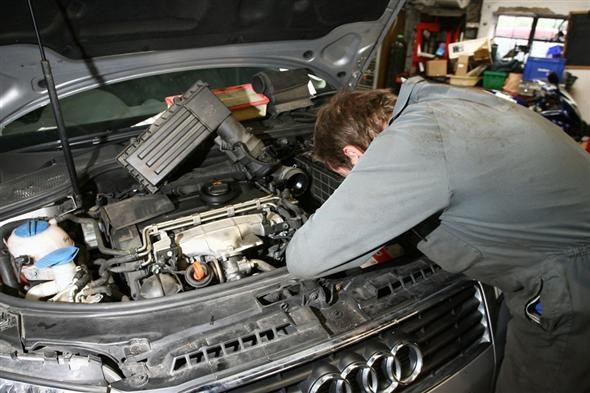Nobody can expect a car to be in perfect condition after three years of ownership, but leasing companies will charge if they think your company car is damaged beyond reasonable wear and tear.
Although sometimes your company will pick up the bill, it is not uncommon for the fleet manager to pass the cost onto you.
That’s why it’s important to make sure that you check your car thoroughly before returning to the leasing company and be well informed of any potential damage that could be flagged up.
We’ve detailed what’s expected from you and how you can carry out your own appraisal to head any problems off before you hand the car back at the end of your lease.
What is fair wear and tear?
After three of four years of ownership you can be almost certain that your company car will not be in the same condition from when you were first handed the keys. Fair wear and tear occurs with everyday use and causes deterioration, buttons lose their shine, your seat may have sagged and general material fabrics may start to look a little worn, all of which would be deemed fair wear and tear and to be expected during the course of ownership.
However, what fair wear and tear does not cover is neglect, harsh treatment of controls or fabrics and inappropriate stowing of items which may cause damage over time.
Regular maintenance checks
Regular maintenance checks are an important part of keeping your car in tip top shape.
To minimise the risk of breaking down you need to carry out frequent checks to make sure your company car remains roadworthy but also to prevent more serious faults occurring as a result.
- Tyres – You should frequently check that your tyres are the correct pressure and tread depth should also be measured. If any of the four tyres fall short of the legal limit, which is 1.6mm, they should be replaced immediately. Also take a closer look at each of the tyres to make sure there aren’t any cracks, bulges or excessive wear.
- Oil – Always check there is enough engine oil – you can usually use the dipstick to measure how much is left.
- Brakes – Test your brakes before leaving for a particularly long journey to check for wear.
- Coolant – Make sure the engine coolant is sufficiently topped-up to the marked level.
Assessing damage: Is it fair or not?
- Paint damage: repairs are generally required when a chip or scratch goes through the base coat. However, small chips on areas such as the door shuts are acceptable – relative to vehicle age and mileage.
- Vehicle glazing: all glass should be kept clean. Damage in the driver’s direct line of sight or affecting heating elements will need immediate repair and door mirrors should be clean.
- Bodywork dents: dings of up to 10mm in diameter are acceptable (if, as above, the base coat has not been penetrated). However, several dents on the same panel is not acceptable and will probably cost money to repair.
- Scratches: scratches of up to 25mm in length are acceptable – once again as long as they have not penetrated the base coat. Scratches longer than 25mm are likely to incur a charge.
- Alloy wheels or hub caps: minor scuffing to the wheel is acceptable but dents or major damage is not. The spare wheel, jack and all tools must be present and intact when returning your car too.
- Body damage: all painted areas will be examined when the car is handed back after the lease period. Evidence of sub-standard repair is not acceptable.
- Upholstery: there’s going to be an element of wear to the seats relative to the mileage the car has covered, but rips, tears or burns are not acceptable. All seats the car originally came with must also be present.
Returning your car – appraisal tips
- Try to carry out the appraisal of your car around 10 weeks before the vehicle is due for return to the contract hire firm. This will allow time to have any faults fixed that may end up costing your fleet manager money.
- When you’re looking at your car try to be as honest and objective as you can. It may be an idea to ask a friend or colleague to help.
- Choose a time and place with good natural light and try not to do it in the rain. This is how the leasing company will examine your vehicle. Appraisals carried out in poor light or wet weather are likely to miss faults.
- Before appraising the vehicle make sure that it has been washed.
- Walk all the way round the vehicle and examine closely each panel including the roof, bonnet and boot. Kneel down at both the front and rear of the vehicle, and look along each flank. This will help you pick out marks and dents that may otherwise be difficult to see.
- Inspect all glass including headlamps, lenses, windscreens, windows and mirrors for chips or cracks that may incur extra costs.
- Check the tyres (including the spare) for damage and that the wear on the tread across each tyre is even. Inspect alloy wheels or hub caps for scratches, dents or major scuffing.
- Check upholstery for tears, burns and stains.
- Inspect all dash trims, switches and buttons for damage.
Just so you know, we may receive a commission or other compensation from the links on this website - read why you should trust us.




